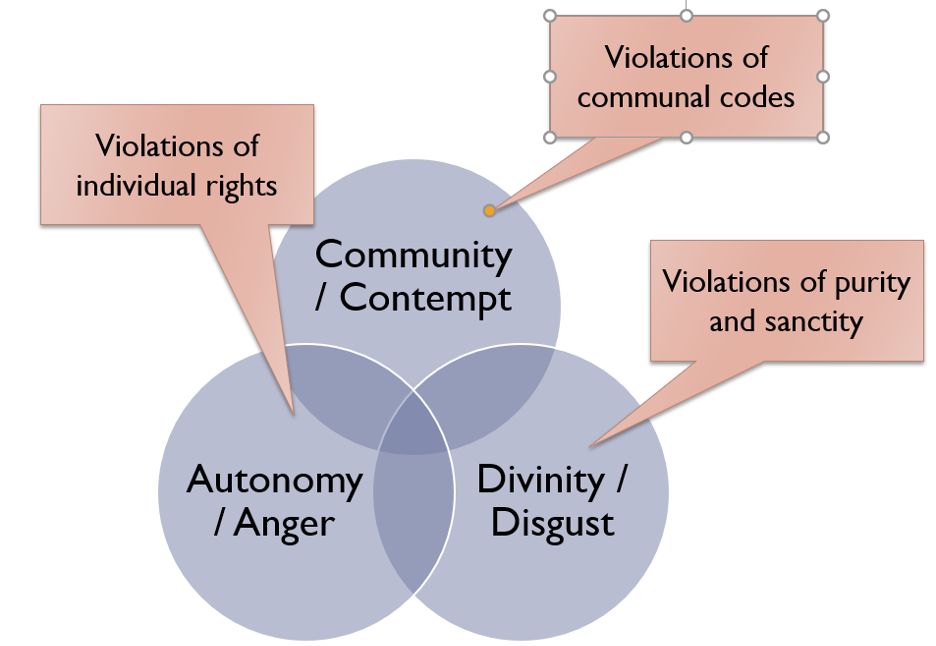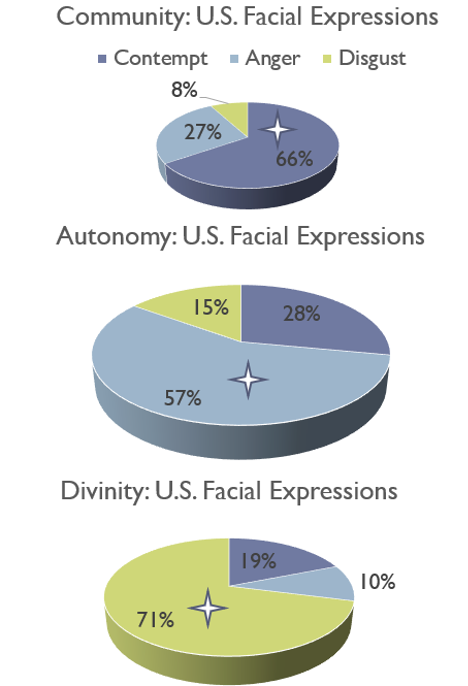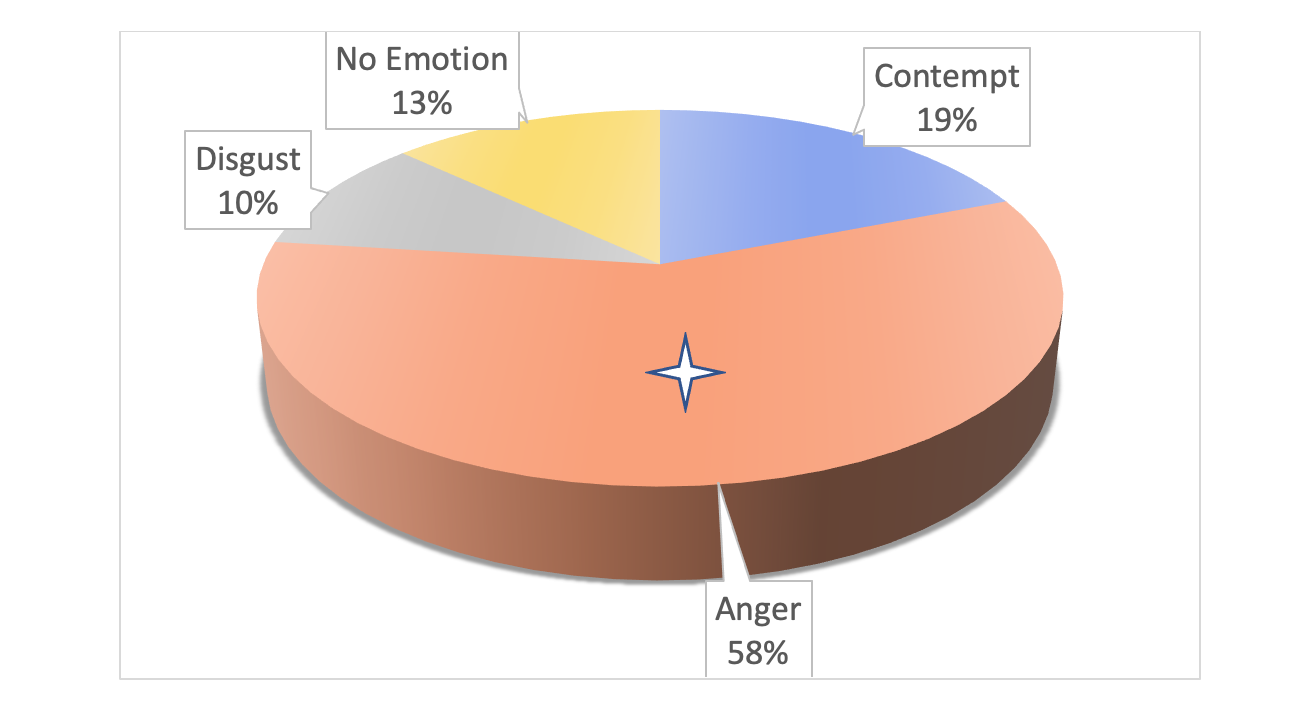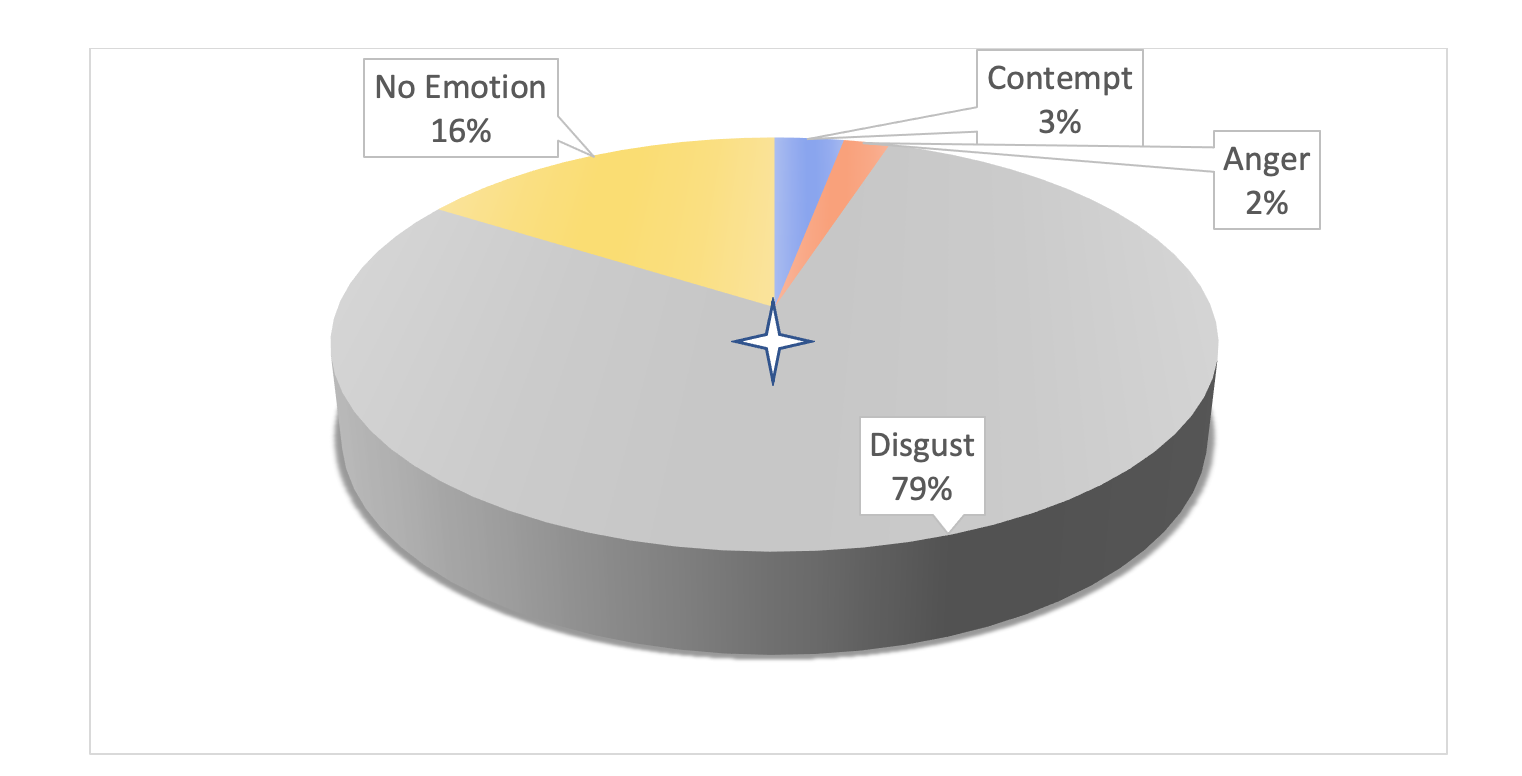Chapter 10: Disgust
The CAD Triad Hypothesis
Figure 18
Visual of CAD Triad Hypothesis

Community Violation:
occurs when another person does not uphold or behave in line with the duties established by their “community” or social hierarchy. These violations include disrespect toward authority figures and violation of social/cultural norms.
Adapted from “The CAD Triad Hypothesis: A mapping between three moral emotions (contempt, anger, disgust) and three moral codes (community, autonomy, divinity),” by P. Rozin, L. Lowery, S. Imada, and J. Haidt, 1999, Journal of Personality and Social Psychology, 76(4), p. 578 (https://doi.org/10.1037/0022-3514.76.4.574)
Autonomy Violation:
occurs when another person directly violates the individual rights and freedoms of another person. The person who is violated could include the self.
Adapted from “The CAD Triad Hypothesis: A mapping between three moral emotions (contempt, anger, disgust) and three moral codes (community, autonomy, divinity),” by P. Rozin, L. Lowery, S. Imada, and J. Haidt, 1999, Journal of Personality and Social Psychology, 76(4), p. 578 (https://doi.org/10.1037/0022-3514.76.4.574)
Divinity Violation:
occurs when another person disrespects God or religion. Also, occurs when people engage in acts that degrade the soul of the self or other people. These violations include all four types of disgust.
Adapted from “The CAD Triad Hypothesis: A mapping between three moral emotions (contempt, anger, disgust) and three moral codes (community, autonomy, divinity),” by P. Rozin, L. Lowery, S. Imada, and J. Haidt, 1999, Journal of Personality and Social Psychology, 76(4), p. 578 (https://doi.org/10.1037/0022-3514.76.4.574)
To test the CAD hypothesis, US and Japanese students read scenarios that included one of the three moral violations. After reading each scenario, participants selected one of 6 facial expressions and one of three emotion labels to describe the scenario. Each emotion was displayed in two different facial expressions – this allowed researchers to account for different combinations of AUs to represent the same emotion (remember, above we talked about how there may be several different disgust expressions).
The findings for the American participants are displayed below. These results were the same for the Japanese and American participants. For facial expressions, participants matched the facial expression to the correct violation at beyond chance levels. For emotion labels, participants matched the correct label to the correct violation for anger (58%) and disgust (79%; see Figure 19). But, participants did not select the contempt word label for the community violations at a beyond chance level. Interestingly, most participants (43%) labeled the community violations as “no emotion.”
Figure 19
Results for Facial Expressions (Top) and Word Labels (Bottom) for American Participants (Rozin et al., 1999).

Community Violation: U.S. Word Labels

Autonomy Violations: U.S. World Labels

Divinity Violations: U.S. Word Labels
Adapted from “The CAD Triad Hypothesis: A mapping between three moral emotions (contempt, anger, disgust) and three moral codes (community, autonomy, divinity),” by P. Rozin, L. Lowery, S. Imada, and J. Haidt, 1999, Journal of Personality and Social Psychology, 76(4), p. 580 (https://doi.org/10.1037/0022-3514.76.4.574). Copyright 1999 by the American Psychological Association.


